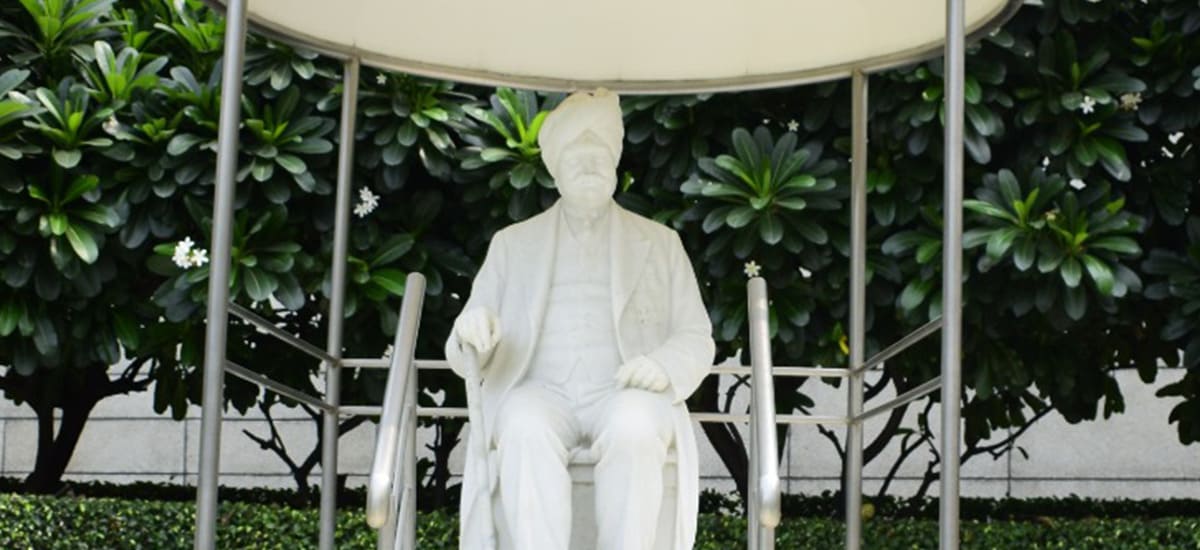
Sir Ganga Ram was a renowned Indian philanthropist, civil engineer, and politician who lived during the British Raj. He is widely remembered for his contributions to the development of infrastructure in Punjab, including the construction of canals, railways, and roads. He was also the founder of the famous Sir Ganga Ram Hospital in Lahore, which continues to provide medical care to millions of people in Pakistan.
Sir Ganga Ram was born on April 13, 1851 in Mangtanwala, a village in the Nankana Sahib district of Punjab, which is now in Pakistan. He was born into a Punjabi Hindu family belonging to the Khatri clan, a community of traders and merchants. His parents, Daulat Ram Agrawal and Smt. Rup Kaur, hailed from Uttar Pradesh, and his father worked as a junior police sub-inspector before moving to Mangtanwala.
Sir Ganga Ram's birth was significant as it fell on Baisakhi day, which is considered the first day of the Punjabi new year and the beginning of the wheat harvesting season for Punjab farmers. It is also an important day for people of the Sikh faith as it marks the day when Guru Govind Singh initiated the Sikh faith in 1699.
Sir Ganga Ram's academic journey was marked by brilliance and dedication. He was awarded a scholarship to study at the prestigious Government College in Lahore in 1869, where he continued to excel. In 1871, he was granted another scholarship, this time to attend the Thompson Engineering College in Roorkee, India. Sir Ganga Ram completed his degree in civil engineering in 1873, and his exceptional academic performance earned him a gold medal. His educational qualifications, combined with his passion for engineering and philanthropy, laid the foundation for his remarkable career as a civil engineer and humanitarian.
Sir Ganga Ram's education played a critical role in his success as a civil engineer. His rigorous academic training and practical experience in the field allowed him to take on complex projects with confidence and skill. Additionally, his commitment to lifelong learning ensured that he stayed at the forefront of his field and continued to innovate and make important contributions throughout his career
Sir Ganga Ram began his career as an engineer in the Public Works Department (PWD) of the British Raj in India. He quickly proved himself to be an exceptional engineer with a talent for innovation and a dedication to public service.
During his long and distinguished career, Sir Ganga Ram was responsible for designing and constructing a number of iconic buildings and structures that helped to modernize India's infrastructure. Here are just a few examples of his most notable projects:
In addition to these projects, Sir Ganga Ram was also involved in the construction of numerous other buildings and structures, including hospitals, schools, and government buildings. His contributions to India's infrastructure were instrumental in the country's modernization and continue to benefit the people of India to this day.
Sir Ganga Ram dedicated his life to serving the people of India. He generously donated to various charitable causes, including the establishment of hospitals, schools, and temples. His legacy continues to inspire generations of Indians who aspire to make a positive difference in the lives of others.
Sir Ganga Ram as an accomplished architect and engineer., designed and constructed several magnificent buildings, including the Lahore Museum, Aitchison College, and the Mayo School of Arts, among others. His buildings incorporated Indian architectural traditions, along with western construction devices to protect them from the climate and ensure efficient sanitation.
Despite his success in urban architecture, Sir Ganga Ram never forgot his roots in rural Punjab. Upon his retirement from his government job, he established Gangapur, a model village with new irrigation and farming systems. He also built a unique transportation system to transport passengers from the railway station to Gangapur.
One of Sir Ganga Ram's most ambitious projects was the hydel power project in Renala Khurd. The project used five turbines to irrigate wasteland, transforming it into fertile fields.
In addition to his engineering and architectural work, Sir Ganga Ram was a champion for widows in conservative Hindu society. He founded the Widows' Marriage Association and donated his own money to it. He also established a Hindu Widows' Home to train women with skills to support themselves. The home included schools and a hostel to help widows pass examinations and train them to become teachers of handicrafts.
The Sir Ganga Ram Trust was established in his name, which helped establish the Sir Ganga Ram Free Hospital and Dispensary in Lahore. The hospital grew to become a full-fledged hospital with well-equipped surgical and medical departments.
Sir Ganga Ram's last charitable project was the establishment of the Hindu Apahaj Ashram, a home for the elderly, disabled, and infirm. After his death in 1927, some of his ashes were brought back to Lahore and buried next to the ashram as per his wishes. His tomb, the Ganga Ram Samadhi, still stands today. Sir Ganga Ram's selfless work and dedication to serving others continue to inspire people around the world.